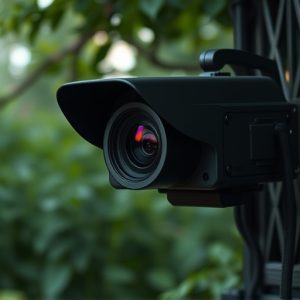Detecting Hidden Batteries: RF Guide for Nanny Camera Identification
Battery-powered covert nanny cameras, integrated with radio frequency (RF) technology, pose a signif…….
Battery-powered covert nanny cameras, integrated with radio frequency (RF) technology, pose a significant threat to privacy. These hard-to-detect devices emit faint RF signals, which experts can locate using specialized equipment like handheld detectors or remote sensors. Detection methods involve scanning various RF frequencies and differentiating camera signals through pattern recognition. Advanced RF detectors offer precise location confirmation, aiding in safe removal. Understanding jurisdiction-specific regulations is crucial; unauthorized use carries severe penalties. Staying informed and taking preventive measures safeguards privacy rights while ensuring safe environments.
In an era where privacy concerns are paramount, detecting hidden cameras, particularly battery-powered covert nanny cameras, has become a crucial skill. This comprehensive guide delves into the science and techniques behind identifying these clandestine devices. From understanding the inner workings of battery-powered covert nanny cameras to utilizing radio frequency (RF) detection methods, you’ll explore powerful tools and safety precautions. By the end, readers will be equipped with the knowledge to navigate this intricate landscape, ensuring their personal and professional spaces remain secure.
- Understanding Battery-Powered Covert Nanny Cameras
- The Science Behind Radio Frequency Detection
- Identifying Hidden Cameras Using RF Signals
- Tools and Techniques for RF Camera Detection
- Legal Considerations and Safety Precautions
Understanding Battery-Powered Covert Nanny Cameras
Battery-powered covert nanny cameras have become increasingly sophisticated, posing a subtle yet significant threat to privacy. These devices are designed to operate discreetly, often with minimal power consumption to extend their lifespan and avoid detection. They can be concealed in everyday objects like clocks, light switches, or even children’s toys, making them hard to identify without specialized knowledge. Understanding how these cameras function is crucial for both consumers and professionals tasked with detecting them.
The versatility of battery-powered covert cameras lies in their ability to capture video footage remotely without drawing attention. They typically use wireless transmission technology, such as radio frequency (RF) signals, to send data to a receiver or base station. This enables users to access live feeds or recorded videos from afar via smartphone apps or computers. Detecting these cameras requires recognizing potential RF emissions and understanding the associated equipment and frequencies used by covert devices, making it a specialized field within electronic counter-surveillance.
The Science Behind Radio Frequency Detection
The science behind radio frequency (RF) detection involves pinpointing the subtle electromagnetic signals emitted by devices like battery-powered covert nanny cameras. These cameras, designed to remain hidden and undisturbed, operate on specific frequencies, creating a traceable signal that dedicated RF detectors can identify. By utilizing specialized equipment that scans and analyzes these frequencies, professionals can detect even the most discreetly placed surveillance devices.
RF detection leverages the fact that electronic equipment, including covert cameras, continuously transmit and receive data through radio waves. These signals, though often imperceptible to human senses, leave a distinct digital footprint. Skilled technicians employ handheld detectors or remote sensors to intercept these transmissions, allowing them to locate the source—in this case, hidden cameras—with remarkable accuracy. This non-invasive method ensures that no physical contact is made with the device, preserving its integrity and maintaining the evidence’s admissibility in legal proceedings involving Battery Powered Covert Nanny Cameras.
Identifying Hidden Cameras Using RF Signals
Detecting hidden cameras, particularly battery-powered covert nanny cams, involves a unique approach leveraging radio frequency (RF) signals. These miniature devices often emit faint but detectable RF bursts, providing crucial clues for their location. By utilizing specialized equipment and expertise, experts can intercept these signals, allowing them to pinpoint the exact position of the camera.
The process begins with scanning various RF frequencies known to be used by covert cameras. Upon detection of a signal, further analysis is conducted to differentiate it from other electronic devices. This involves understanding the specific patterns and characteristics unique to battery-powered cameras, enabling precise identification without causing disruption or alerting the device’s presence.
Tools and Techniques for RF Camera Detection
Detecting hidden cameras, particularly battery-powered covert nanny cameras, requires specialized tools and techniques. One common method involves using a radio frequency (RF) detector. These devices can pick up signals from active cameras, as many of them communicate via RF for data transmission. By scanning through various frequencies, users can identify suspicious signals that might indicate the presence of a hidden camera.
Advanced RF detectors are designed to pinpoint the exact location of the source, helping investigators narrow down potential hiding places. Additionally, these tools often come with features like audio monitoring and visual confirmation, making it easier to detect and dismantle covert surveillance equipment. Regular maintenance and updates on known camera frequencies are crucial for ensuring the effectiveness of RF detection methods.
Legal Considerations and Safety Precautions
When detecting hidden cameras, particularly battery-powered covert nanny cameras, it’s crucial to understand legal considerations and safety precautions. In many jurisdictions, installation and use of such devices are strictly regulated to protect privacy rights. Unauthorized placement of hidden cameras can lead to severe legal consequences, including fines and imprisonment. Always ensure that any surveillance equipment is installed and used in accordance with local laws and regulations.
Safety precautions are equally important. Hidden cameras may pose risks to individuals if not properly secured or positioned. Avoid handling devices that appear suspicious or unmarked. If you suspect a violation of privacy, document the evidence carefully and report it to relevant authorities. Prioritize safety by staying informed about potential risks and taking preventive measures when dealing with battery-powered covert nanny cameras.
Detecting hidden cameras, particularly battery-powered covert nanny cameras, requires a blend of technical knowledge and legal awareness. Understanding the science behind radio frequency (RF) detection empowers individuals to safeguard their privacy effectively. By identifying RF signals and utilizing specialized tools, one can uncover these clandestine devices. However, it’s crucial to navigate legal considerations and adhere to safety precautions while employing such methods. Armed with this knowledge, folks can protect their personal spaces and ensure a more secure environment in today’s digital era.


